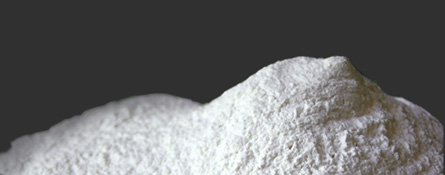
Additives & Fillers
Every activity in modern life is influenced by plastics and many depend entirely on plastics products. Imagine cars without synthetic bumpers, dashboards, steering wheels and switches. Imagine medicine without plastic hypodermic syringes and artificial hip joints. Telecommunications are dependent on plastic phones, circuit boards, and cable insulation. Our entertainment and leisure relies on the unique combination of characteristics offered by plastics in sports equipment and clothing, CDs, video and audio tape, television and cinema. You would not be able to read this over the internet without plastics!
All these plastics products are made from the essential polymer mixed with a complex blend of materials known collectively as additives. Without additives, plastics would not work. With additives, plastics can be made safer, cleaner, tougher and more colorful. Additives cost money, of course, but by reducing production costs and making products last longer, they help us to save money and conserve the world's precious raw material reserves. In fact, our world today would be a lot less safe, a lot more expensive, and a great deal duller without the additives that turn basic polymers into useful plastics.
One way to improve the performance characteristics of plastic products is to compound resins with additives and fillers. Additives help fight against factors such as heat, chemicals, or light. There are thousands of additives/fillers on the market today. Below are some of the most common ones used in manufacturing.
Antimicrobials: Used to control the build up of bacteria, fungi and algae on the surface of plastic products. A wide range of chemical and natural compounds are used as antimicrobials. An example would be naturally occurring silver ions used in products such as cell phones or organic acids in food-related products.
Antioxidants: Used to control the degradation of products due to air exposure.
Antistatics: Used to minimize static electricity. These types of additives can be mixed with the resin or applied to the surface of the product. Antistatic additives are common to a wide variety of products ranging from cosmetics to industrial goods to sensitive electronic parts.
Electrostatic Induction: Used for the economical and even application of polyurethane paints to consumer goods such as automobiles, bicycles, and others.
Fibers: Used to increase strength and stiffness. The most common type of fibers added for strength would be carbon and glass. Glass-reinforced plastic is more commonly known and marketed as fiberglass.
Conductive fibers: Used to provide special properties for certain applications.
Plasticizers: Added to make products softer and more flexible. Some plasticizers evaporate and tend to concentrate in an enclosed space; the "new car smell" is caused mostly by plasticizers evaporating from the car interior.
Lubricants: Used for easier molding or for increased adhesion and viscosity of the molded parts.
UV stabilizers: Used for the protection of the resin’s mechanical properties by absorbing selective UV rays resulting in less degradation.
Fillers: An inexpensive substance such as wood, metal, glass or clay that is added to plastics in very small particles to decrease cost, improve hardness, stiffness, and impact strength.
Flame retardants / Smoke suppressants: A variety of chemicals that can be added to resins to eliminate its tendency to burn. For polyethylene and similar resins, chemicals such as antimony trioxide and chlorinated paraffin are useful.
Colorants: Used to add color, special effects, or patterns to plastic products.
Call Project Engineering at (713)643-6577 or ask an engineer